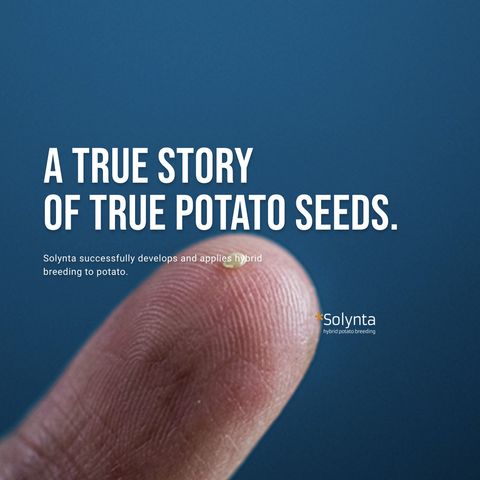Coming soon: the world's first hybrid potato

Descarga y escucha en cualquier lugar
Descarga tus episodios favoritos y disfrútalos, ¡dondequiera que estés! Regístrate o inicia sesión ahora para acceder a la escucha sin conexión.
Coming soon: the world's first hybrid potato
Esta transcripción es generada automáticamente. Ten en cuenta que no se garantiza una precisión absoluta.
Descripción
Here’s some of my main learning points from this podcast, with Charles Miller, director of strategic alliances and development at Solynta: - Solynta is the first company able to hybridise...
mostra más- Solynta is the first company able to hybridise potatoes. Hybrid breeding is used extensively in many crops, such as maize/ corn, tomatoes, sunflowers. The idea is to cross two in-bred, so-called elite lines each with highly desirable traits, to achieve what is known as hybrid vigour, achieving highly targeted improvements by combining both sets of attractive traits in a single line.
- To explain Solynta’s breakthrough, an initial requirement to achieve hybrid breeding is first to make plants able to self-pollinate, by finding and switching off a so-called self-incompatibility gene. You can then create two separate, in-bred lines of male and female plants. The hybrid step then involves artificially cross pollinating those two in-bred lines. Solynta’s breakthrough was to find this incompatibility gene in potatoes.
- There are a couple of key advantages of using hybrids in potatoes:
- First, your seed product is then a true seed, as opposed to a potato tuber. Using seed potatoes, or tubers, has been the favoured approach to breeding potatoes – to clone and then plant potato tubers of a particular variety. The trouble with that approach is that potatoes are very bulky, and tubers can spread disease, from the parent plant and the soil. If you can market a variety using true seed instead, then suddenly you save a lot of fuel in haulage, as well as storage space, and a cleaner product. Solynta estimates the seed weight comparison, when sowing a field of potatoes, is 2.5 tonnes per hectare of tubers, versus 25 grams of true seed.
- Second, it should be easier and quicker to improve particular characteristics or traits, because of the targeted nature of the in-breeding /hybrid breeding process, where many desirable traits involve multiple genes, and so require significant, multigenic, breeding precision, for example using genetic marking to identify the right genes, and using introgression – for example targeting particular wild potato genes – to incorporate these into a new elite in-bred line.
- Charles says that the company is now transitioning from being a technical company to a commercial company, as it seeks to exploit the breakthrough it has made, and that it should take only two to four years to go from an idea to a final hybrid in most cases, versus a decade of so under the previous, centuries-old techniques.
- Regarding specific traits, the first target is late blight resistance – quite sensibly, as by far the biggest cause of economic damage to potato yields, and also the biggest financial cost in terms of crop protection chemicals. Charles puts the latter in the EU alone at more than €500 million annually. He says Solynta has gone from blight resistant concept to product in two years, and the company is now testing that product. “The results are quite promising.”
Información
| Autor | Gerard Wynn |
| Organización | Gerard Wynn |
| Página web | - |
| Etiquetas |
Copyright 2024 - Spreaker Inc. an iHeartMedia Company
